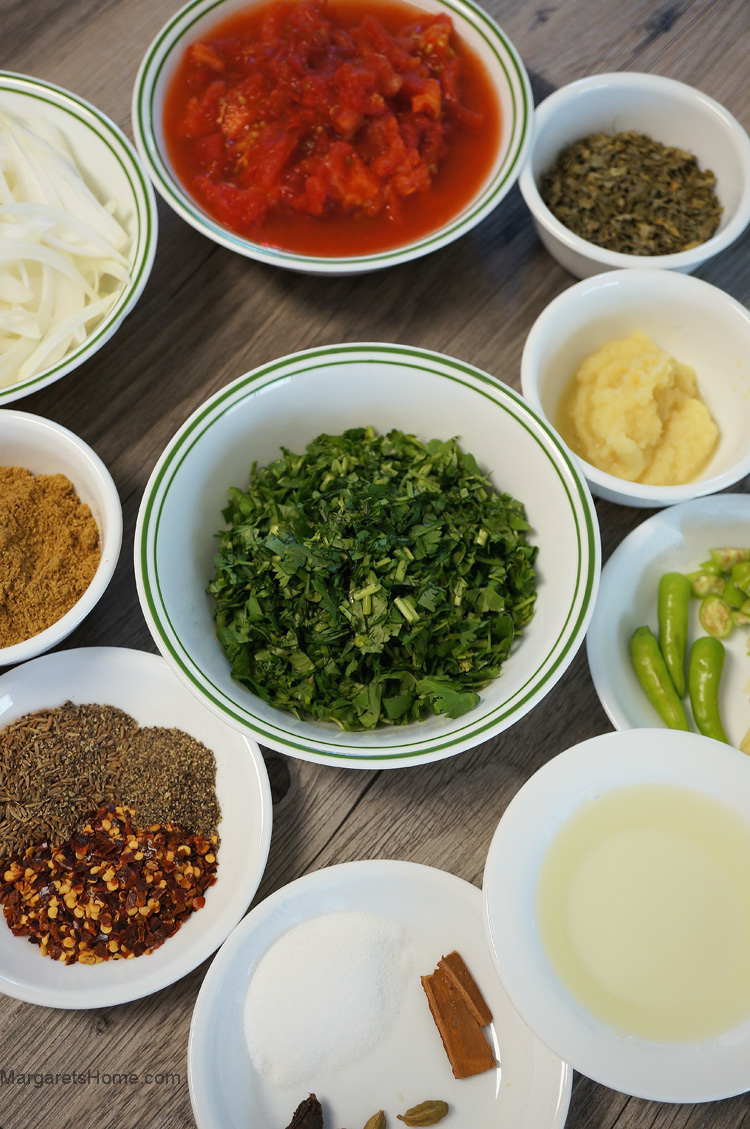The idea of sharing my cooking routine with you in today’s blog post came to me when my friend asked me the question, “Maggie, how do you cook?”
“Mise en place” is a French culinary term which means “to put in place.” I am sure you have eaten at a restaurant where you could watch the chefs at work through a large glass window. You could not have missed seeing all the little containers with herbs and spices, and bottles of sauces close to their work stations. Well, that’s “mise en place” in action. I think that is the most important lesson I learned from watching chefs at work and also watching cooking shows on TV.
Planning and reading a recipe completely is key. There have been a number of times I’ve gone down to the kitchen to bake a cake only to realize that the butter and eggs needed to be at room temperature. Yes, I’ve tried to cheat, but using the microwave to soften the butter and placing the eggs in a warm bath produced a less than perfect cake. There have also been a number of times when I started cooking and found I had an ingredient missing. So, here is how “mise en place” works for me.
1. If I’m using a recipe from a cookbook, blog, or magazine, I read the recipe more than once. Skimming leads to buying wrong ingredients like filo dough instead of puff pastry dough! I keep my recipes, cookbook, or iPad in a well-lit spot, away from my prep area.
2. The process always begins with a clean kitchen.
3. All the dry ingredients like spices, herbs, turmeric, cumin, salt etc. are measured and organized in the order that I’ll need them. If the spices go into the dish I am preparing all at the same time, I put them together on a plate. Cooking utensils are picked and ready for use.
4. I put things back in their place as soon as I finish using them. Spice bottles go back on the shelf as soon as I’ve measured the amount that I need, yoghurt goes back in the fridge, sugar back in the pantry, etc.
5. Next, I do the prep work for fresh herbs and vegetables – chopping, mincing, grating, grinding, blending, etc. Measured ingredients are put into bowls. I keep a small garbage bowl or a plastic bag on my counter to collect scraps for disposal. It makes for an easy clean up.
If I’m baking, I make sure that ingredients that need to be at room temperature are taken out, the oven is preheated, and baking pans are ready.
When I’m cooking Indian food for a large number of guests, I schedule a prep day to get a head start. I make the ginger and garlic paste, clean and wash my cilantro, mint, green chillies, chop my vegetables, cut and marinate meat, fry the paneer, and cook the lentils.
6. I clean up as I go, or if I have some slack time in between cooking. A messy kitchen can be frustrating, so cleaning as you go makes the experience more pleasant.
7. I cook dishes that take the longest first. Then I work my way down to the easier dishes and those that take the least amount of time to prepare.
8. I have my serving dishes ready.
It is true that many home cooks, like our mothers, didn’t use measuring cups and spoons and had the ability to simply start a recipe and everything just fell into place. Some people just have that talent! For the rest of us, “mise en place” has many benefits. For me, it has made my cooking process quicker, smoother, more enjoyable, and less stressful. Even while writing this piece I had to organize my thoughts like I do ingredients in a recipe. It was like putting “mise en place” in the form of an outline. So, whether you are stepping into the world of cooking for the first time or whether you are an aspiring Food Network Star here’s the secret ingredient to inevitable success – “mise en place!”

